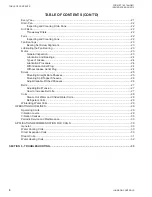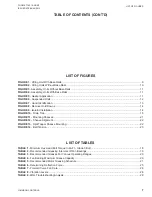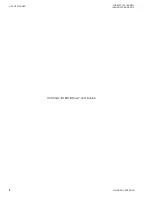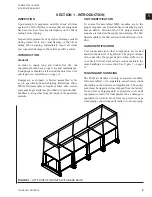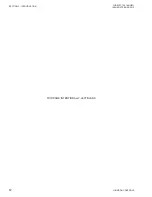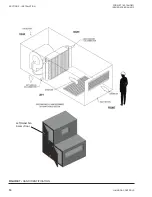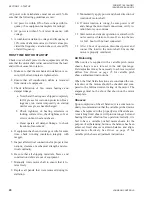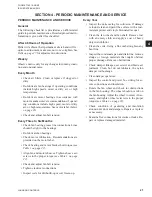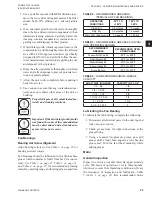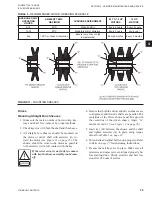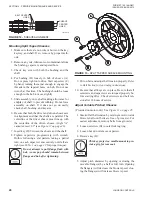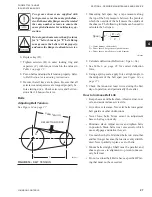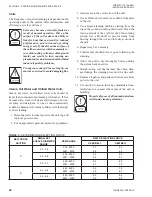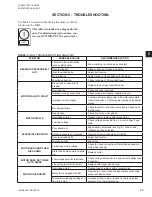
AC power current imbalance must not exceed 2%. Be
sure that the following guidelines are met:
1. AC power is within 10% of rate voltage with fre-
quency. (See equipment nameplate for ratings).
2. AC power is within 5% of rated frequency with
voltage.
3. A combined variation in voltage and frequency of
10% (sum of absolute values) of rated values pro-
vided the frequency variation does not exceed 5%
of rated frequency.
FIRST TIME MOTOR STARTUP
Check to see that all power to the equipment is off. Be
sure that the motor shaft is disconnected from the load,
and will not cause fan rotation.
1. Make sure that the mechanical installation is se-
cure. All bolts and nuts are tightened etc.
2. Ensure that all construction debris is removed
from inside of equipment.
3. Check lubrication of fan, motor bearings and
damper linkage
a. Note that all bearings are shipped completely
full of grease for corrosion protection. Bear-
ings may run warm temporarily on startup
until excess grease has discharged.
b. Check tightness of bearing setscrews or
locking collars. Also, check tightness of set-
screws on fan wheel and sheave.
c. Hand operate all damper linkage, to check
freedom of movement.
4. If equipment has been in storage or idle for some
time, check winding insulation integrity with
megger.
5. Inspect all electrical connections for proper termi-
nations, clearance, mechanical strength and elec-
trical continuity.
6. Be sure that all shipping materials, braces, and
construction debris are out of equipment.
7. Manually rotate motor shaft to ensure that it ro-
tates freely.
8. Replace all panels that were removed during in-
stallation.
9. Momentarily apply power and check direction of
rotation of motor shaft.
10. If motor rotation is wrong, be sure power is off
and change the motor lead connections, verify ro-
tation before you continue.
11. Start motor and ensure operation is smooth with-
out excessive vibration or noise. If so, run the mo-
tor for 1 hour with no load connected.
12. After 1 hour of operation, disconnect power and
connect the load to the motor shaft. Ensure that
motor is properly ventilated.
Air Balancing
When units are supplied with a variable pitch motor
sheave, they are as a rule set to the mid rpm range.
Field adjustment may be necessary to achieve required
airflow. See
for variable pitch
sheave adjustment instructions.
When the final field alterations are concluded the cur-
rent draw of the motors should be checked and com-
pared to the full load current rating of the motor. The
amperage must not be above that shown on the motor
nameplate.
Sheaves
Upon completion of the air balance, it is a common in-
dustry recommendation that the variable pitched motor
sheave be replaced with a properly sized fixed sheave.
A matching fixed sheave will provide longer belt and
bearing life and vibration free operation. Initially, it is
best to have a variable pitched motor sheave for the
purpose of air balancing, but once the balance has been
achieved, fixed sheaves maintain balance and align-
ment more effectively. See
for
variable pitch sheave adjustment instructions.
JOHNSON CONTROLS
20
FORM ET102.19-NOM1
ISSUE DATE:08/26/2013
SECTION 3 - STARTUP

